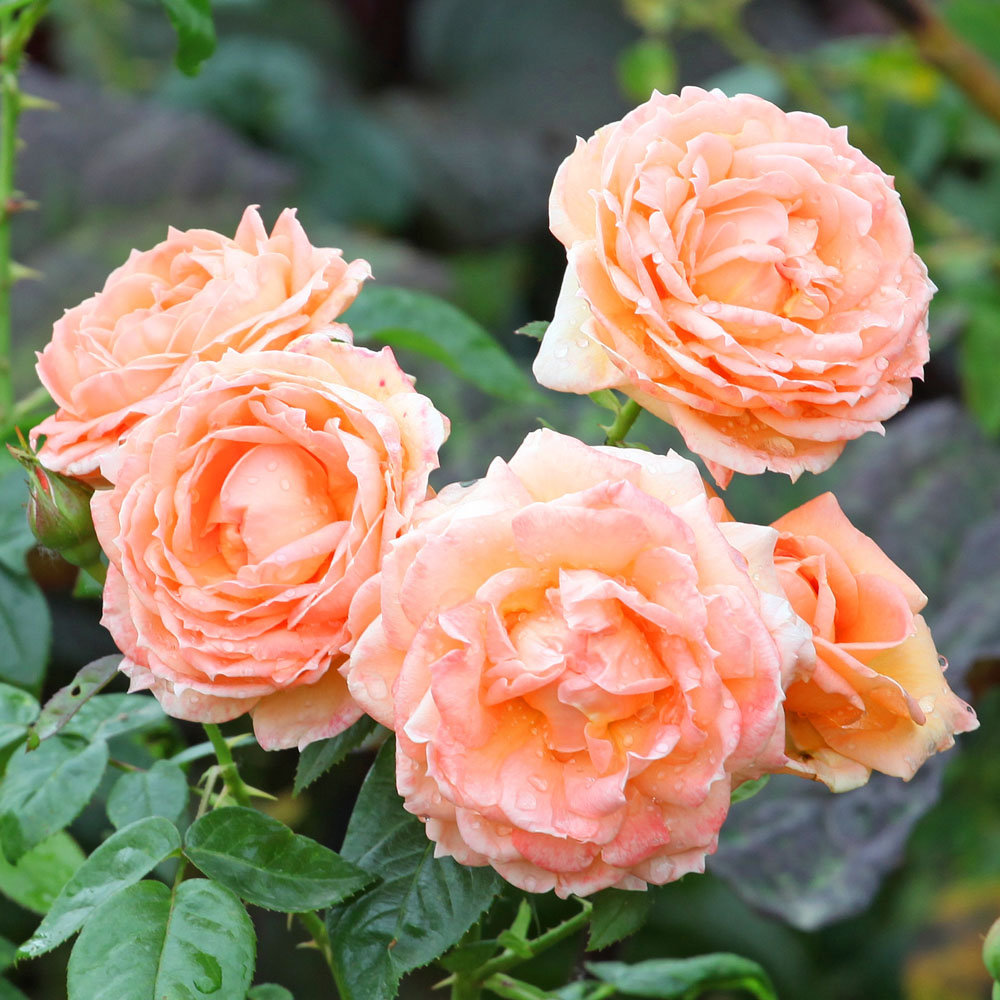Description
Rosa ‘Lady Marmalade’ is a stunning repeat-flowering floribunda rose that was voted Rose of the Year in 2014. This rose is highly resistant to diseases and blooms for a long period during the summer months. The large clusters of tangerine-orange flowers have a delightful spicy fragrance and open up to reveal a pretty yellow centre, adding a vibrant pop of colour to any garden.
Key Facts
- Common Name(s):Lady Marmalade Rose
- Hardiness:Fully hardy
- How big will I get? Rosa ‘Lady Marmalade’ can grow to a height of 0.9m and a spread of 0.7m.
- Did You Know That:The world’s largest rose bush is in Tombstone, Arizona, and covers an area of over 8,000 square feet?
Plant Calendar
A rough guide to how this plant will change through the year.
| Jan | Feb | Mar | Apr | May | June | July | Aug | Sept | Oct | Nov | Dec | |
| Flowering Time |  |
 |
 |
 |
||||||||
| Foliage Colour |  |
 |
 |
 |
 |
 |
 |
 |
 |
| J | F | M | A | M | J | J | A | S | O | N | D |
 |
 |
 |
 |
||||||||
 |
 |
 |
 |
 |
 |
 |
 |
 |
Care Guide

Soil Requirements
Rosa ‘Lady Marmalade’ is a versatile plant and can cope with wet or drier soils, but prefers there to be decent drainage. This plant can grow in soil with a wide range of pH levels, it is not picky about the pH level of the soil.

Best Position
Rosa ‘Lady Marmalade’ prefers a sheltered position and can cope with either full sun or partial shade.

Maintenance
Rosa ‘Lady Marmalade’ should be pruned in late winter or early spring, before new growth begins. Begin by removing any dead, damaged, or diseased wood from the plant, making sure to sterilize your pruning shears between cuts to prevent the spread of disease. Next, cut back any old wood to encourage the growth of new shoots, cutting back to a healthy bud or lateral branch. Remove any weak or spindly growth that won’t produce good blooms, focusing on leaving strong, healthy shoots that will produce plenty of flowers. Finally, shape the plant by cutting back any overly long or unruly shoots, creating a more compact, attractive plant. By following these steps, you can keep your shrub roses healthy and blooming beautifully year after year.

Pest, Diseases and Wildlife
Rosa ‘Lady Marmalade’ can have problems with aphids, scale insects and caterpillars, it can be vulnerable to certain diseases such as black spot, rust and powdery mildews. It is also known to attract bees.





